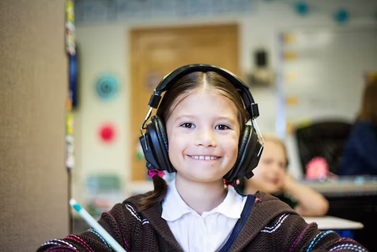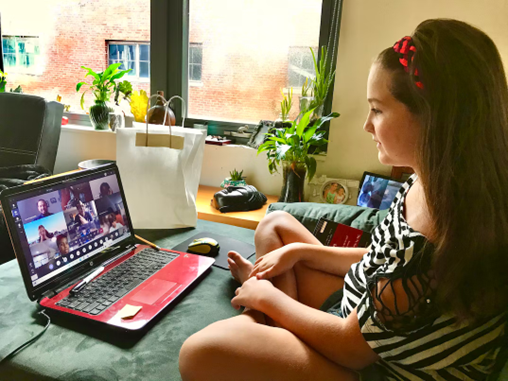The past few years have changed all of our lives, and education is no different. While the more traditional classrooms have returned to face-to-face teaching, it is clear that virtual teaching methods will continue to have an important role to play.
Whether it’s dealing with illness, teaching around the world, or even making sure students don’t miss out on learning, virtual teaching continues to be useful for educators.
However, many of the issues that teachers had to deal with when they originally switched to the virtual classroom still persist. Particularly when teaching younger children, it can be difficult to replicate the feeling of community and belonging when teaching online.
Despite this, there are ways you can get the most out of virtual teaching. By reading this article and implementing the information it contains, you can ensure that your students don’t miss out on the community aspects of education while enjoying the new opportunities that online technology offers to create innovative and exciting lessons.
How can you create a great online learning environment?
Every teacher knows how important it is to build an open and supportive learning community. This is even more important when teaching is restricted to video calls. The following tips can help your students feel like they belong, even when learning from their dorm rooms.
1. Establish routines and expectations
Having a clear understanding of the routines and rules of any school setting is one of the most important ways a teacher can confidently run a class. Without this consistency, students will be unsure of the expectations around their work and behavior.
The same is true when teaching virtually. When you start teaching a new class online, start by outlining what you expect from your students. Consider how students should contribute to classes and ask questions, where they can submit work to you, and whether you want all of your students to have their cameras and microphones on.
For older students, encourage a discussion about what an online professional learning environment looks like. Ethical culture is defined as a set of expectations shared by people, and this should shape the environment you want to create.
Image sourced from Unsplash
It may be more effective to do this via an online video call with the whole class. This can allow you to agree on expectations and ensure that all of your students have a good understanding of what is expected of them.
At the same time, you need to establish a clear routine for the online school day. This can include setting aside time each day for whole class discussions or setting tasks for your students to complete each morning, such as completing a section of a shared form. google doc.
Once you’ve established online learning routines and expectations for your class, you need to make sure your students follow them. You also need to continually check that they are happy with them and understand them.
2. Use morning meetings
When designing this routine, try to include a meeting with your class in the morning. This helps build a community, while also building a good structure that gets your students in the learning mindset.
For younger children, you can use this time to focus on building community. Think about what you would normally do to engage them in a physical classroom, and try to replicate that through an online call. This can include classroom songs, interactive games, or teacher-led readings.
Morning meetings are also useful for older students. They can be particularly useful for remembering what you learned yesterday. Another thing to consider is how you can use cloud collaboration tools have students work together to summarize previously learned information.
You should also use this time to try to build community within your class. If one of your students has a birthday, encourage the class to sing ‘Happy Birthday’ at the morning meeting. You can spend this period congratulating students on their good work or contributions in the classroom.
3. Make the most of technology
While teachers understandably focus on the downsides of teaching virtually, hosting your lessons over the Internet opens up new possibilities for your teaching.
This can include very ambitious new ideas. As an example, AR and VR Learning it has become more and more popular. If your students have access to AR or VR equipment, you can use this technology to really bring your teaching to life.
One example of how AR and VR can be used is by increasing gamification. Think about parts of your syllabus that students would understand better if they actually interacted with it; For example, you might want to teach history by using a first-person VR video of a major event.
It should be noted that not all educational institutions can provide their students with potentially expensive equipment such as VR headsets. However, this does not mean that they cannot take full advantage of modern technology.
Online learning is the perfect opportunity to use internet games and quizzes. While these can be distracting in a physical classroom, encouraging your students to complete them can be a crucial part of learning online.
In addition to this, you can use social media in your teaching (with appropriate age groups). You may want to create a teaching account on social media and, for example, produce Instagram Reels for Classroom Use—these would include small, easily understandable bits of information for your students to learn.
4. Foster collaboration and peer learning

Image sourced from Unsplash
The main difference between physical and virtual learning for kids is the social element. If you want to make sure your students thrive, it’s important to provide plenty of opportunities for collaboration.
This can be done in whole class meetings with the use of breakout rooms. Use them for students to discuss questions or worksheets in small groups. This peer-to-peer learning can be a great way to make sure your virtual lessons are more than just a live broadcast of you talking about a topic.
In addition to this, you should encourage discussion among your students to create a sense of community and belonging in your class. You could assign pairs of students specific tasks in the classroom, such as the responsibility of moderating chats or greeting other students who join the video call.
If you use an advanced virtual office phone system, you should also be able to connect your classroom to other classes. Your students may not have seen their friends in other classes all day, so hosting lunch calls between classes can be a great way to build a sense of community.
5. Personalize your teaching
When teaching virtually, it can be easy to get lost behind your webcam. While a physical classroom will constantly require you to maintain great personal relationships with your students, it can be much more difficult to achieve this through online teaching.
One way to ensure that you are building personal relationships is to learn more about your students. Virtual teaching allows you to schedule specific one-on-one meetings that you can use to check on the progress and well-being of individual students, as well as talk with them about their hobbies and interests.
Of course, it can be difficult to remember every detail of the life of every student in a large class. Fortunately, teaching virtually means you can access a record of this, either through a Word document or dedicated software. By recording certain details about people and mentioning them, you’ll ensure that you build personal relationships even when teaching online.

Image sourced from Unsplash
In addition to getting to know your students, it is important that you give them the opportunity to get to know you as an individual. As such, consider how you present yourself to students. Think about what’s in the background of your webcam image; maybe show a poster that shows a bit of your personality.
Another way you can accomplish this through virtual learning is by using an online form for students to vote on the questions they want to ask you. Incorporating these responses into a morning meeting, for example, can be a fun way to make your teaching personal and create a sense of community within your class.
Virtual learning: it is not an impediment to building a community and belonging classroom
As we have seen, teachers can often be intimidated by the idea of teaching virtually. Especially when trying to build a learning community, many teachers aren’t sure how to replicate the best parts of physical classrooms in the online classroom.
However, by following the advice in this article, you can ensure that students in your online classes can achieve the same level of community and sense of belonging as students in a physical classroom.
Making sure you create clear routines and rules and encourage collaboration will mean your students will have a great learning experience and be able to learn to the best of their ability. In addition to this, the use of regular morning meetings and an emphasis on personal relationships will allow your classes to be community and positive environments.
Virtual learning also offers you new opportunities to engage students, especially through AR and VR learning. All of this means that you can create an online classroom perfectly designed for your students to succeed in!






